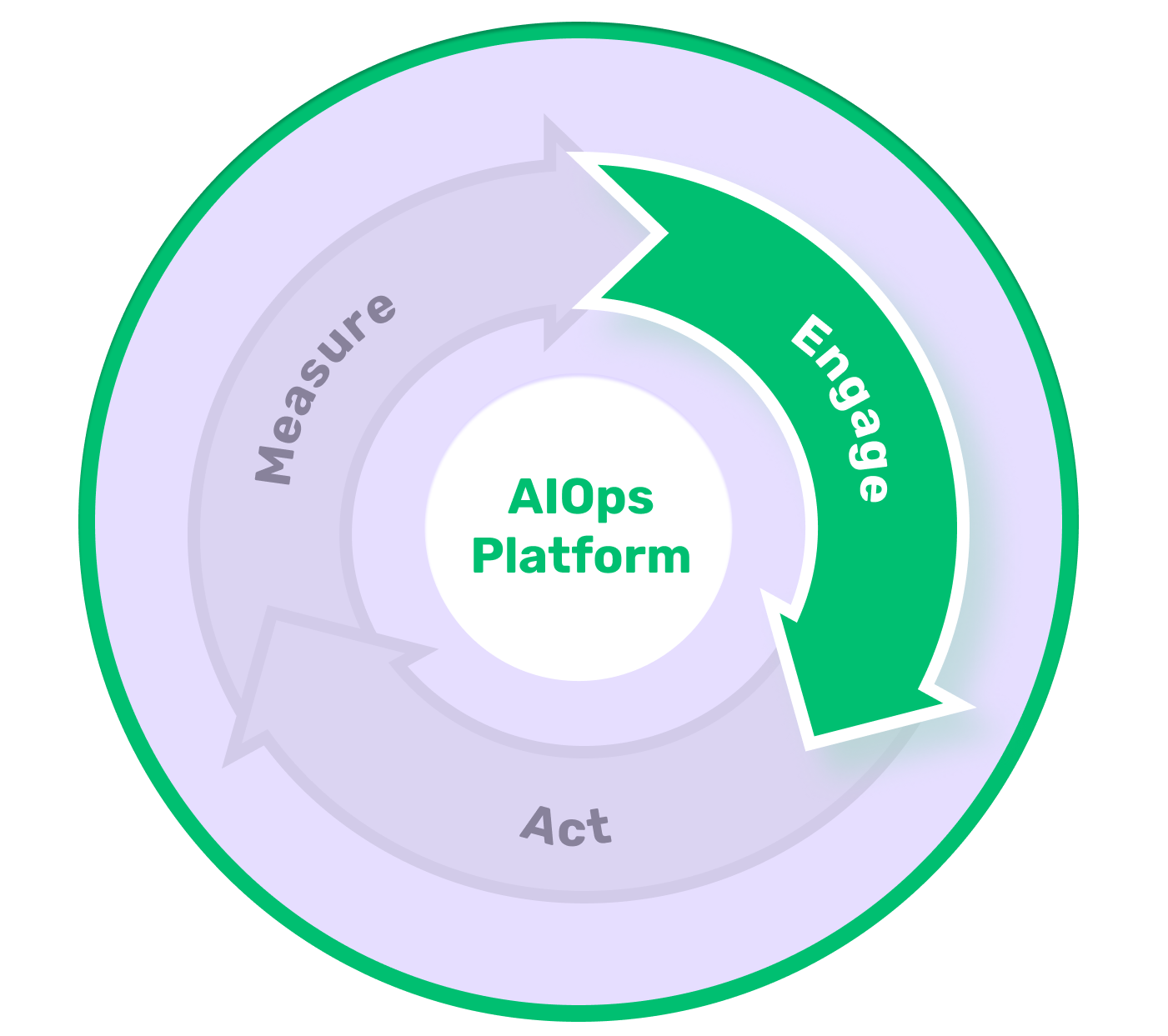As IT operations become increasingly complex, organizations are turning to artificial intelligence for IT operations (AIOps) to help manage their IT environments more effectively. AIOps leverages big data analytics, machine learning, and other AI techniques to automate and optimize IT operations. Gartner, a leading research and advisory company, has developed a framework for AIOps called "Continuous insights," which helps organizations harness the power of AIOps to streamline their IT operations. In this blog, we'll explore the Engage stage of the Continuous insights framework, drawing parallels to real-world policing of a city.
Just like how police departments are responsible for maintaining law and order in a city, the Engage stage in the Continuous insights framework focuses on keeping IT operations running smoothly by identifying and resolving issues in an automated and proactive manner. Let's take a closer look at how the Engage stage operates, using the analogy of policing a city.
Alert management
In a city, the police department receives alerts from various sources such as emergency calls, alarms, or patrol officers reporting incidents. Similarly, in the Engage stage of AIOps, the system monitors IT infrastructure and applications for anomalies and generates alerts when potential issues are detected. These alerts act as a trigger for IT teams to investigate and take necessary actions to resolve the issues before they escalate into critical problems.
Incident management
Just like how police officers respond to incidents in a city, the IT operations team in the Engage stage responds to incidents identified by the AIOps system. They assess the situation, gather relevant data, and use the insights provided by the AIOps system to determine the root cause of the incident. They collaborate with different IT teams to resolve the issue quickly and efficiently, just as police officers coordinate with other departments to manage incidents effectively.
Automation and Orchestration
In the Engage stage of AIOps, automation and orchestration play a crucial role in resolving incidents efficiently. Just as police officers use tools such as communication devices, surveillance cameras, and traffic management systems to coordinate their responses, AIOps systems use automation and orchestration to execute predefined actions and workflows to resolve incidents. This helps reduce the manual effort and human errors associated with incident resolution, similar to how technology aids police officers in managing incidents effectively.
Root cause analysis
Identifying the root cause of incidents is critical in both city policing and IT operations. Police officers investigate incidents thoroughly to determine the underlying cause and take appropriate actions to prevent similar incidents in the future. Similarly, in the Engage stage of AIOps, the system performs root cause analysis by correlating data from various sources, identifying patterns, and providing insights to IT teams. This enables them to address the underlying issues and implement preventive measures.
Collaboration and Communication
Just like how police departments collaborate with other agencies, IT operations teams need to collaborate with different IT teams and stakeholders in the Engage stage of AIOps. This involves effective communication, coordination, and knowledge sharing among teams to ensure timely incident resolution and prevent further disruptions. AIOps platforms facilitate collaboration and communication by providing a unified view of incidents, insights, and actions across teams, similar to how police departments use communication tools to coordinate their efforts.
In conclusion, the Engage stage of the Continuous insights framework in AIOps can be likened to policing a city. It involves alert management, incident management, automation and orchestration, root cause analysis, and collaboration among IT teams to keep IT operations running smoothly.

